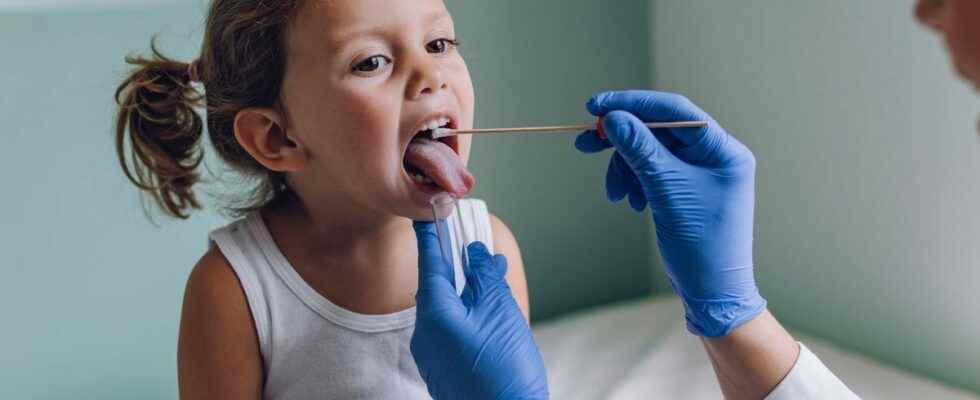Published on
Updated
Reading 3 mins.
in collaboration with
Dr Gérald Kierzek (Medical Director of Doctissimo)
Streptococcus A bacteria infections are on the rise. Public Health France notes a surge in cases “very marked since November in children with levels exceeding those of 2019” and at least three people are said to have died. What is this infection? Should we be worried? What are the preventive measures? Update with Dr Gérald Kierzek, emergency doctor and medical director of Doctissimo.
Cases of Strep A bacteria are on the rise. Public Health France recognizes this in its report of December 12 on the question, and evokes a “unusual rise in children“less than 10 years of these infections,”non-invasive, in particular scarlet fever since September 2022. The levels observed are close to those observed before the Covid-19 pandemic“.
SPF also recalls that “These observations are part of a context where during the two years 2020 and 2021, probably in connection with the barrier measures put in place for Covid-19, the frequency of GAS infections was particularly low“.
What is Streptococcus A infection?
Infection with the bacteria streptococcus A most commonly causes scarlet fever, angina and impetigo. However, recalls Public Health France, group A streptococcus is a pathogen that can be “more rarely, responsible for serious invasive infections (necrotizing skin infections, puerperal infections, pneumopathies and pleuropneumopathies and meningitis) which may be associated with streptococcal toxic shock syndrome (STSS)”. According to Dr Gerald Kierzek, “The anginas are mainly viral and sometimes bacterial, but it is not streptococcus A which is always in question”.
What are the symptoms of a Strep A infection?
Group A Streptococcus (GAS) is a strictly human pathogen that is transmitted by respiratory droplets and direct contact (nasal secretions, skin lesions, etc.). The main symptoms are fever, swollen glands in the neck, sore throat when swallowing, swollen tonsils with white spots and finally a rash.
“These are the typical signs that should lead to consultation. The doctor will then do a test to determine if it is strep throat A and antibiotic therapy can be started.“says Dr. Kierzek.
What are the tests to make the diagnosis?
Faced with a person presenting these symptoms, the doctor can carry out an early diagnostic test. The Directorate General of Health also recommends that all health professionals carry out the TROD, this rapid diagnostic orientation test, which makes it possible to detect Streptococcus A for angina or, if it is negative, to look for scarlet fever. .
Treatments for Streptococcus A
There is no vaccine against the bacteria. On the other hand, several antibiotics are effective. The most widely used is amoxicillin, which is currently experiencing tensions in France.
How many deaths are currently recorded?
According to the latest figures, eight children have been hospitalized and two have died, due to this infection with the Streptococcus A bacteria, as of December 6, 2022. Among adults, one death is also to be reported. However, the Directorate General of Health, like Public Health France, believe that we are not in the presence of a “virulent strainbut rather an unusual increase in cases.
“The current epidemiological situation of invasive group A streptococcal infections is not linked to the emergence of a new bacterial strain but mainly to two already known genotypes (emm12 and emm1). details SPF. “Indeed, deaths are quite rare, and can occur in the presence of a particular terrain, in the event of immunosuppression for example.“confirms Dr Gérald Kierzek.
As with many other pathologies, barrier gestures are essential to protect against Streptococcus A infection. Washing hands, wearing a mask for people with respiratory infections, sneezing or coughing in the bend of the elbow are therefore three gestures essential to limit the risks.
